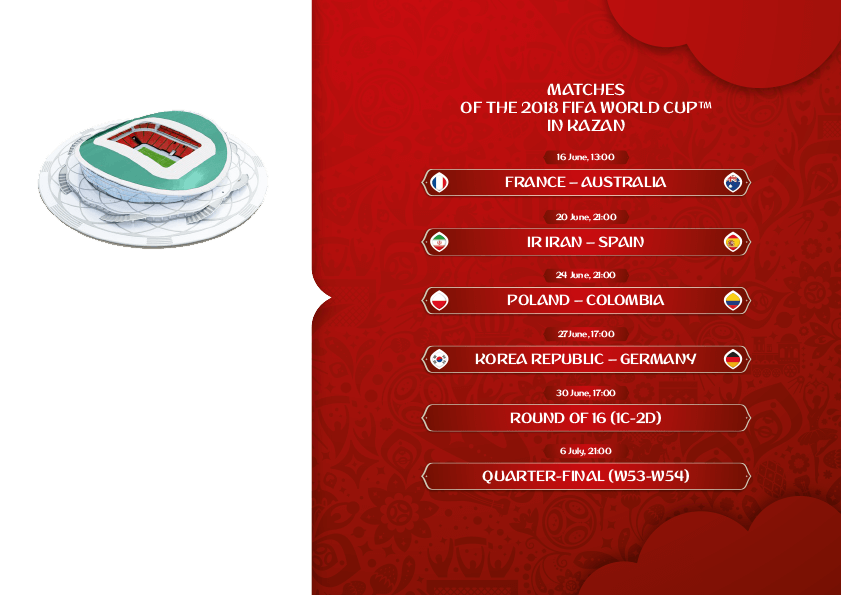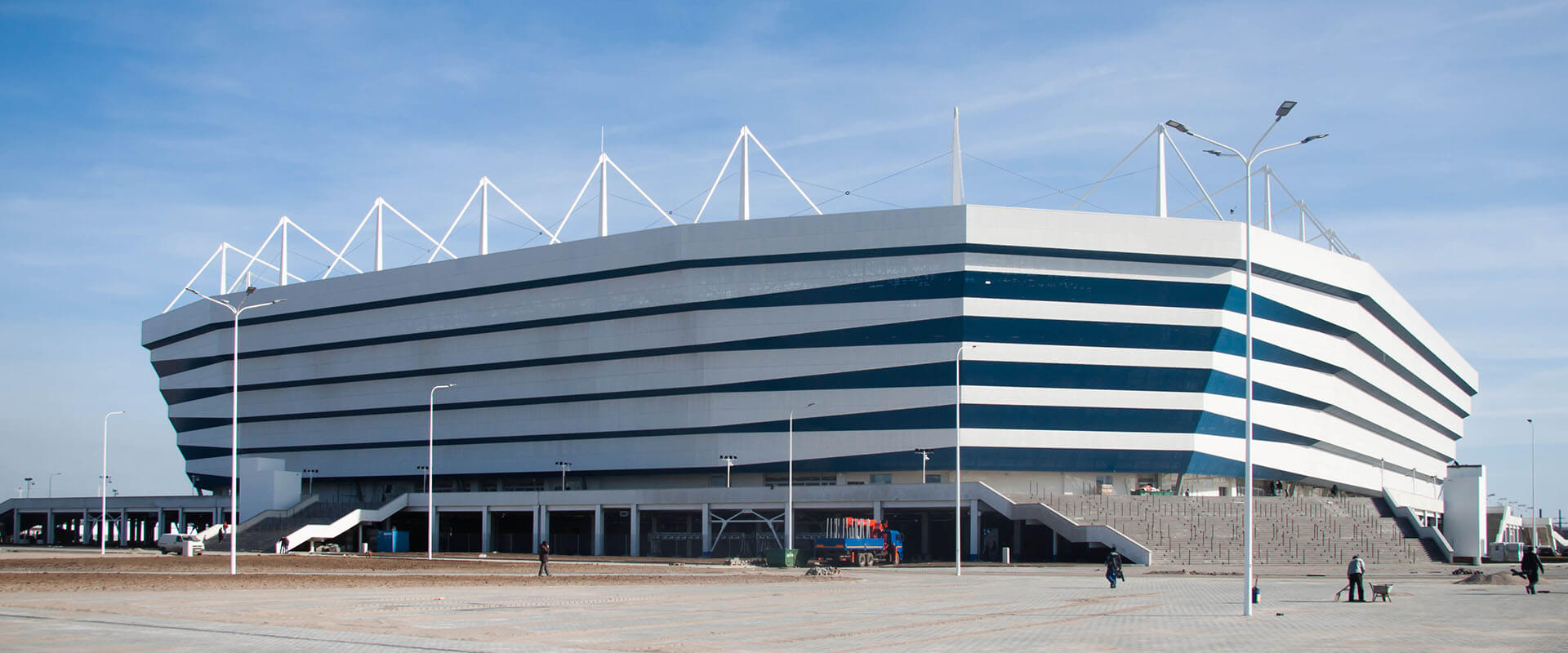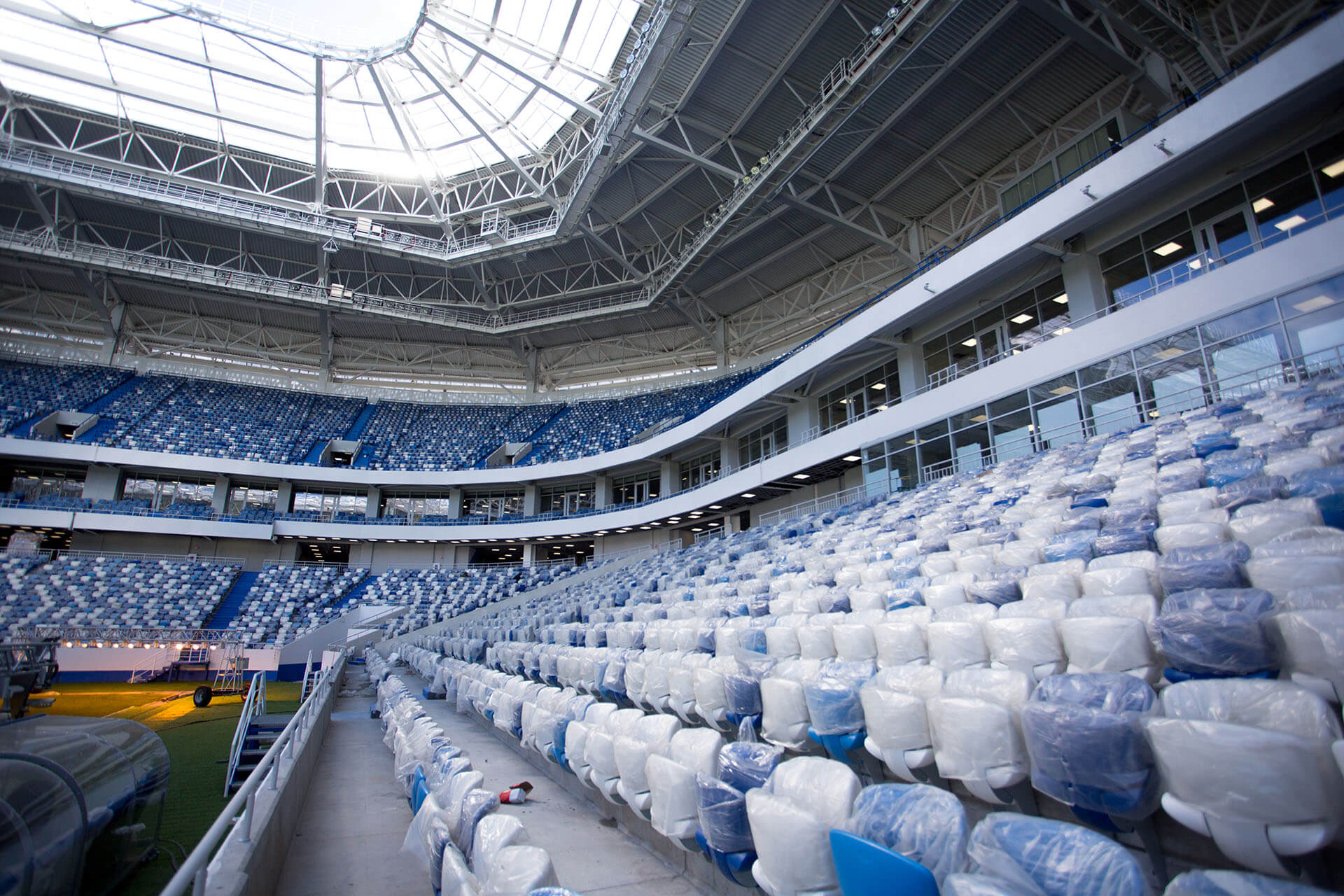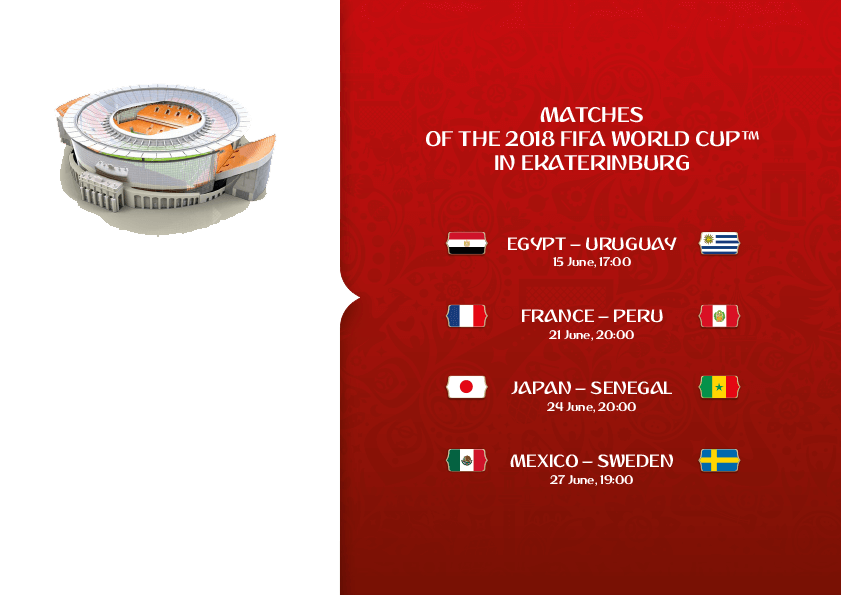Kazan Arena

Water lily with LED
Kazan Arena
History
Kazan Arena was built in preparation for the Summer World University Games in 2013, when it hosted the opening and closing ceremonies. A football pitch was installed once the games were over. The stadium hosted its first match in August 2013, when Rubin Kazan drew 1:1 with Lokomotiv Moscow, and also served as a FIFA Confederations Cup 2017 venue.
Kazan Arena is the world’s only stadium that saw 12 swimming records – the arena was home to a world aquatics championship.
Design
Kazan Arena was designed by Populous, the same architects as Wembley Stadium and Emirates Stadium in London. It has a unique design, which blends seamlessly into Kazan’s urban landscape. Viewed from above, the arena, which stands on the banks of the Kazanka river, resembles a water-lily.
A curved roofline, which drops from the main stands to the stands behind the gates, characterises the impression of the stadium. Another striking feature is the large LED media facade in HD quality. With a width of 150 metres and, at the highest point, 35 metres high, it is the world’s largest LED façade in a football stadium. It has an area of 3,622 square meters and is equipped with three million LEDs.
City and legacy
Kazan is the capital of Republic of Tatarstan and one of the oldest cities in Russia. It is one of the most ethnically diverse cities, with 115 ethnicities living here besides Tatars and Russians. Kazan’s key landmark is the Kremlin, a UNESCO World Heritage Site.
Since its opening, the Kazan Arena has been the venue of first division club Rubin Kasan, Russian champion of 2008 and 2009. However, the audience average in the past season was 9,700.In the summer of 2015, it hosted some of the competitions at the World Aquatics Championships. Two 50-metre swimming pools were built for that event.
As well as football matches and sporting events, the stadium will host a whole range of entertainment shows, concerts and cultural events.
User
Rubin Kasan
Author
FIFA
Wikipedia
More Sports Media
Photographs
© Host city Kazan
Status
New construction
Address
пр-кт Ямашева, 115 А,
Казань, Респ. Татарстан
Russia, 421001
Aerial view
Thank you, Google!
Opening
2013
Spectator seats
45,000
Videos

















